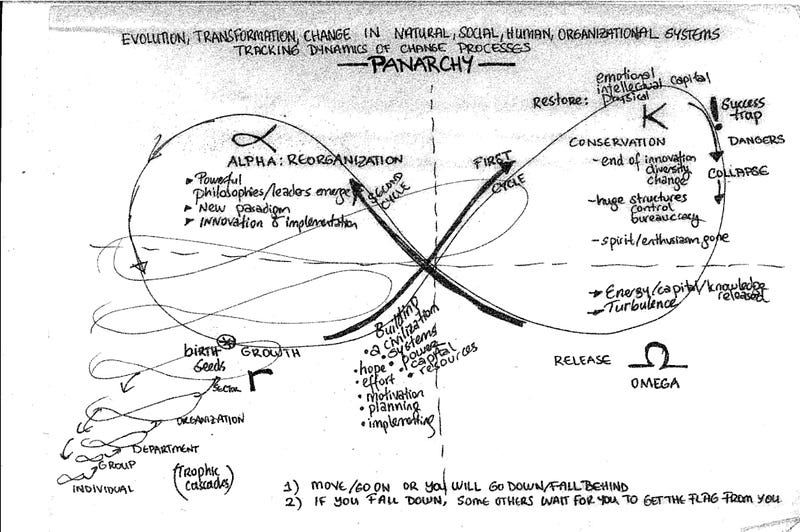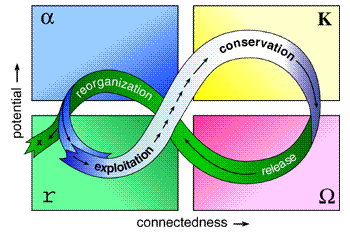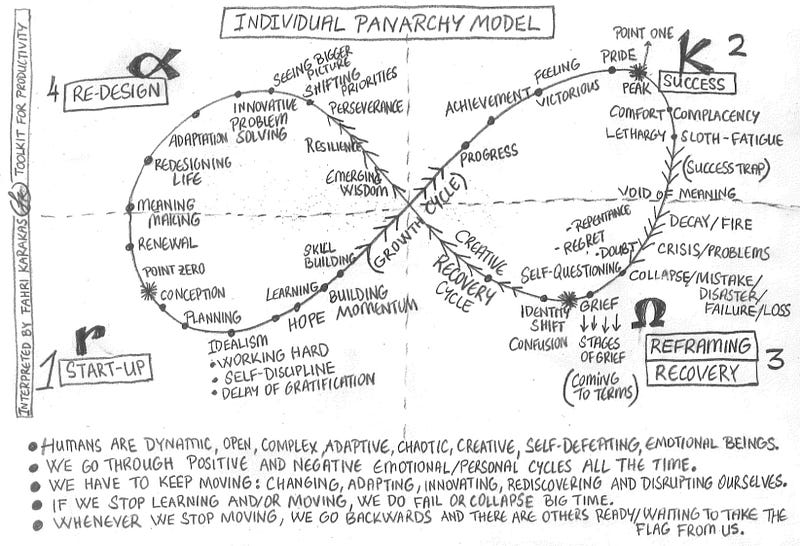Exploring the Intricacies of Panarchy: A Modern Perspective
Written on
Chapter 1: Understanding the Panarchy Model
The Panarchy model serves as a vital interdisciplinary framework used to analyze the intricate dynamics of complex adaptive systems. It provides insights into the transformations and changes occurring within human, organizational, and natural systems. This concept was articulated by Gunderson and Holling in their influential 2003 book, “Panarchy: Understanding Transformations in Systems of Humans and Nature.” As a branch of systems theories, Panarchy aims to develop a comprehensive understanding of the processes, nature, and dynamics of complex systems across both physical and social sciences.

Drawing titled “Panarchy Model” by Fahri Karakas, this concept elucidates the evolution of hierarchical systems, featuring multiple interconnected components. The model effectively describes the cyclical phases of both natural (e.g., forests) and human (e.g., companies) systems, focusing on perpetual adaptive cycles of growth, accumulation, restructuring, and renewal. Panarchy is characterized as a dynamic, cross-scale theory that illuminates the complex relationship between change and stability, continuity and renewal, as well as predictability and unpredictability.

As we delve deeper into the Panarchy model, it becomes evident that it consists of four distinct phases:
Section 1.1: The Four Phases of the Panarchy Model
- R Phase: This growth phase is characterized by the accumulation of resources and capital. In the context of organizations, this phase represents the startup and early growth stages, where rapid expansion is fueled by investments in human resources, technology, and knowledge.
- K Phase: Following the R phase, we enter the conservation stage, where growth slows, and resources are utilized for system maintenance. Organizations in this phase often become rigid, losing their innovative edge and flexibility, which can lead to vulnerability during crises.

- Omega Phase: Known as the phase of creative destruction, Omega is marked by chaos and breakdown. Organizations may face significant challenges and failures, leading to a collapse of previously established structures and power dynamics.
- Alpha Phase: The reorganization phase follows, during which systems undergo profound transformation. This phase is crucial for innovation and renewal, as organizations reassess their methods and dynamics.

To illustrate these concepts further, check out this insightful video:
Chapter 2: Applying the Panarchy Model
The Panarchy model can also be utilized at an individual level, helping us understand our emotional and mental cycles. Just as larger systems experience phases of change, individuals also navigate through various emotional states. By applying the Panarchy model to personal experiences, one can gain valuable insights into their dynamics and emotional transitions.

Section 2.1: Individual Application of Panarchy
Consider the following prompts to reflect on how the Panarchy model applies to your life:
- How do you experience the R phase in personal growth?
- What challenges do you face in the K stage, and how do you combat complacency?
- How do you cope during the Omega phase when faced with significant setbacks?
- In what ways do you embrace the Alpha phase to innovate and renew yourself?

The implications of Panarchy can be extensive, influencing governance, economics, education, and more. It encourages a participatory approach, emphasizing community engagement and inclusivity.
To explore more about this model, watch the video below:
Conclusion
The Panarchy model offers a comprehensive framework for understanding complex systems and their dynamics, both on a societal and individual level. By embracing the principles of Panarchy, individuals and organizations can navigate change more effectively and adapt to the ever-evolving landscape of their environments.
